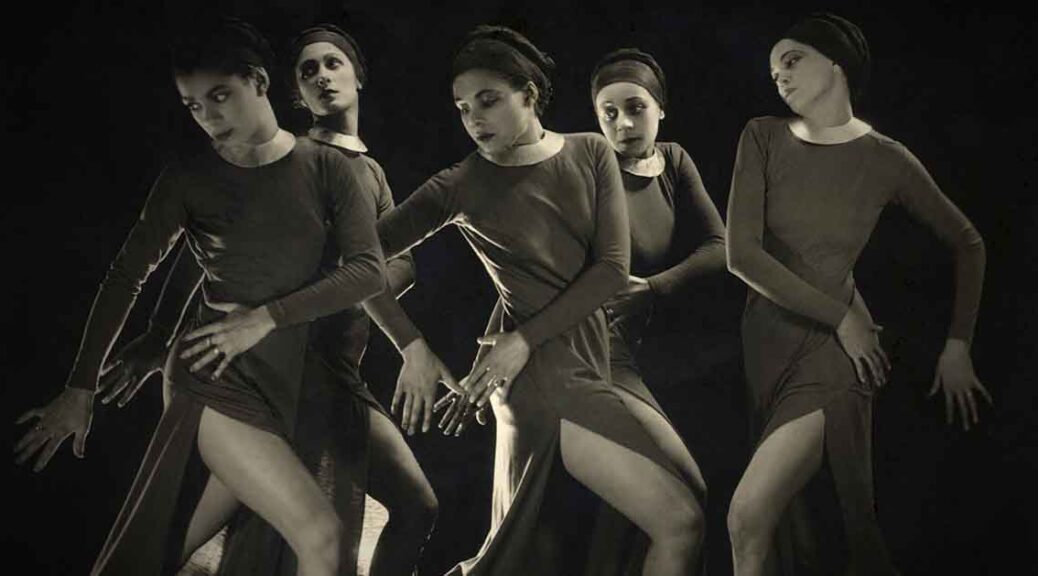Read, hot & digitized: Librarians and the digital scholarship they love — In this series, librarians from the UT Libraries Arts, Humanities and Global Studies Engagement Team briefly present, explore and critique existing examples of digital scholarship. Our hope is that these monthly reviews will inspire critical reflection of, and future creative contributions to, the growing fields of digital scholarship.
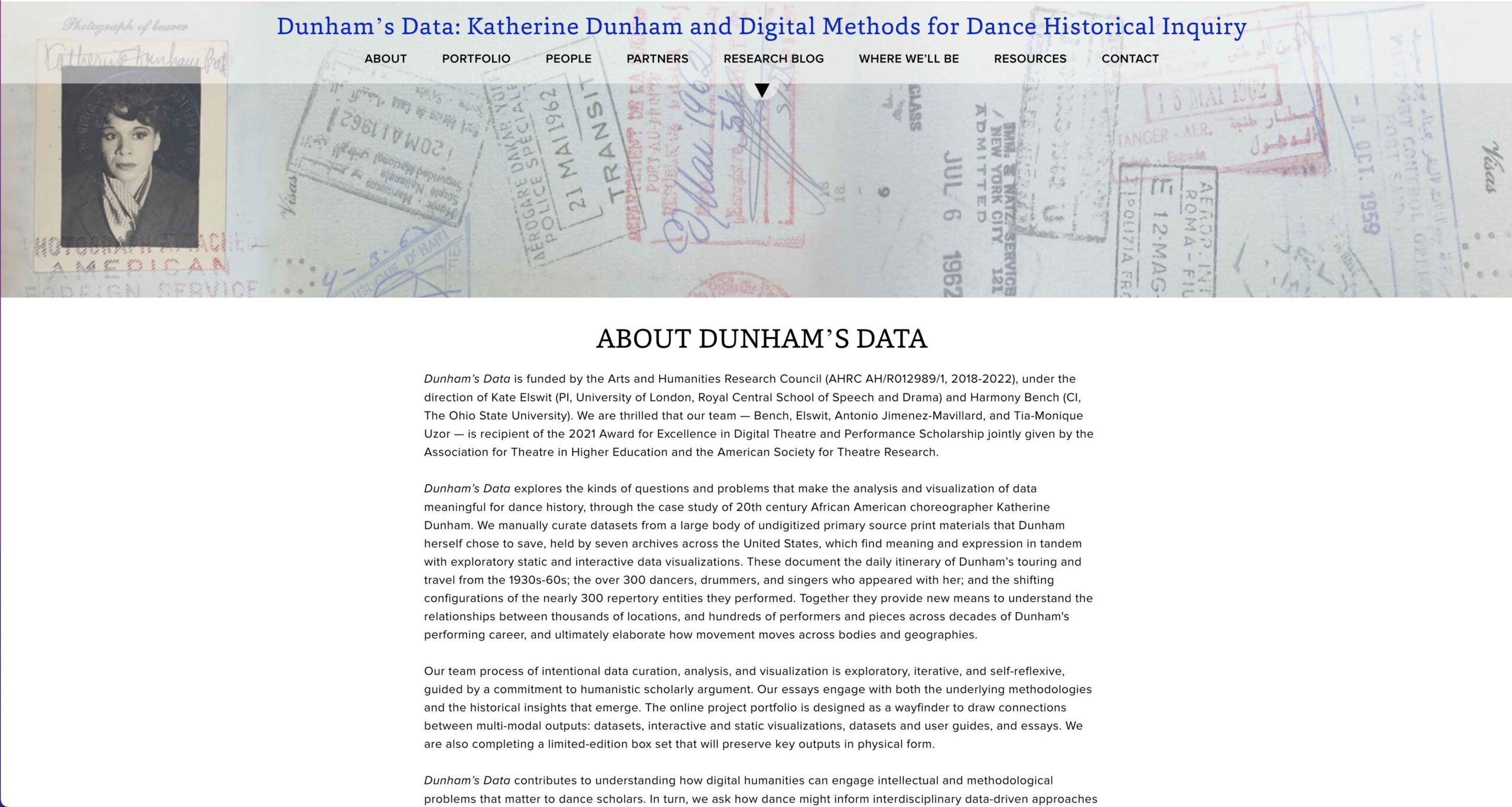
How does a dance move? Where might a dancer go? Such questions most likely evoke images of choreography, references to physical steps performed or patterns made across the floor. But dance scholars Kate Elswit and Harmony Bench are tracking movement from a different perspective, following the touring and travel routes of groundbreaking choreographer Katherine Dunham and her dance company from 1930-1960. Their project, Dunham’s Data: Katherine Dunham and Digital Methods for Dance Historical Inquiry, funded by the UK Arts and Humanities Research Council, documents not only Dunham’s own itineraries, but also accounts for “the over 300 dancers, drummers, and singers who appeared with her; and the shifting configurations of the nearly 300 repertory entities they performed.”
The Katherine Dunham Dance Company was the first African American modern dance company, touring extensively both internationally and across the United States, often disrupting the imposed structures of racial segregation. Dunham was also an anthropologist, author, and social activist, challenging the limited roles and opportunities available to Black women artists.
Dunham’s Data features three core datasets paired with both interactive and static visualizations and contextualized through accompanying essays and related media. Taken together, the materials “provide new means to understand the relationships between thousands of locations, and hundreds of performers and pieces across decades of Dunham’s performing career, and ultimately elaborate how movement moves across bodies and geographies.”
The Everyday Itinerary Dataset spans the years 1947-1960, logging Dunham’s daily whereabouts during a period of consistent international touring, including accommodations, modes of transport, and venues visited. Users can access and mobilize this dataset through an Interactive Timeline of Travel, tracing the global and durational scope of Dunham’s artistic reach. There is also a Well-being Timeline Collage, which I am particularly drawn to, that sequences clippings from personal correspondence, evidencing the emotional labor that undergirded Dunham’s career.
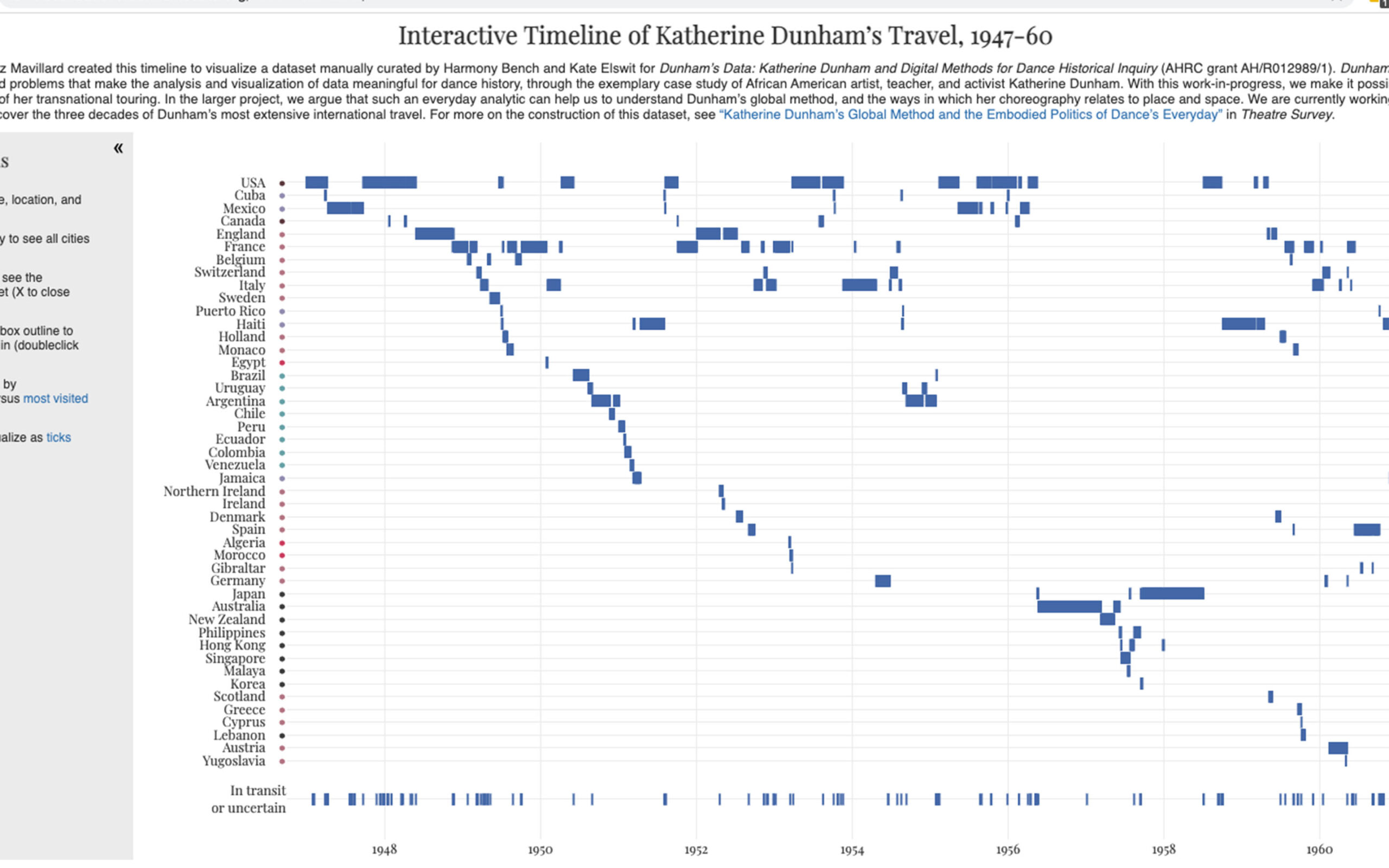
The Personnel Check-In Dataset encompasses the “comings and goings” of company members over time. The visualizations derived from this dataset, for example, the Interactive Chord Diagram, illustrate “who shared space and time together,” offering “a sense of the transmission of embodied knowledge across hundreds of performers.”
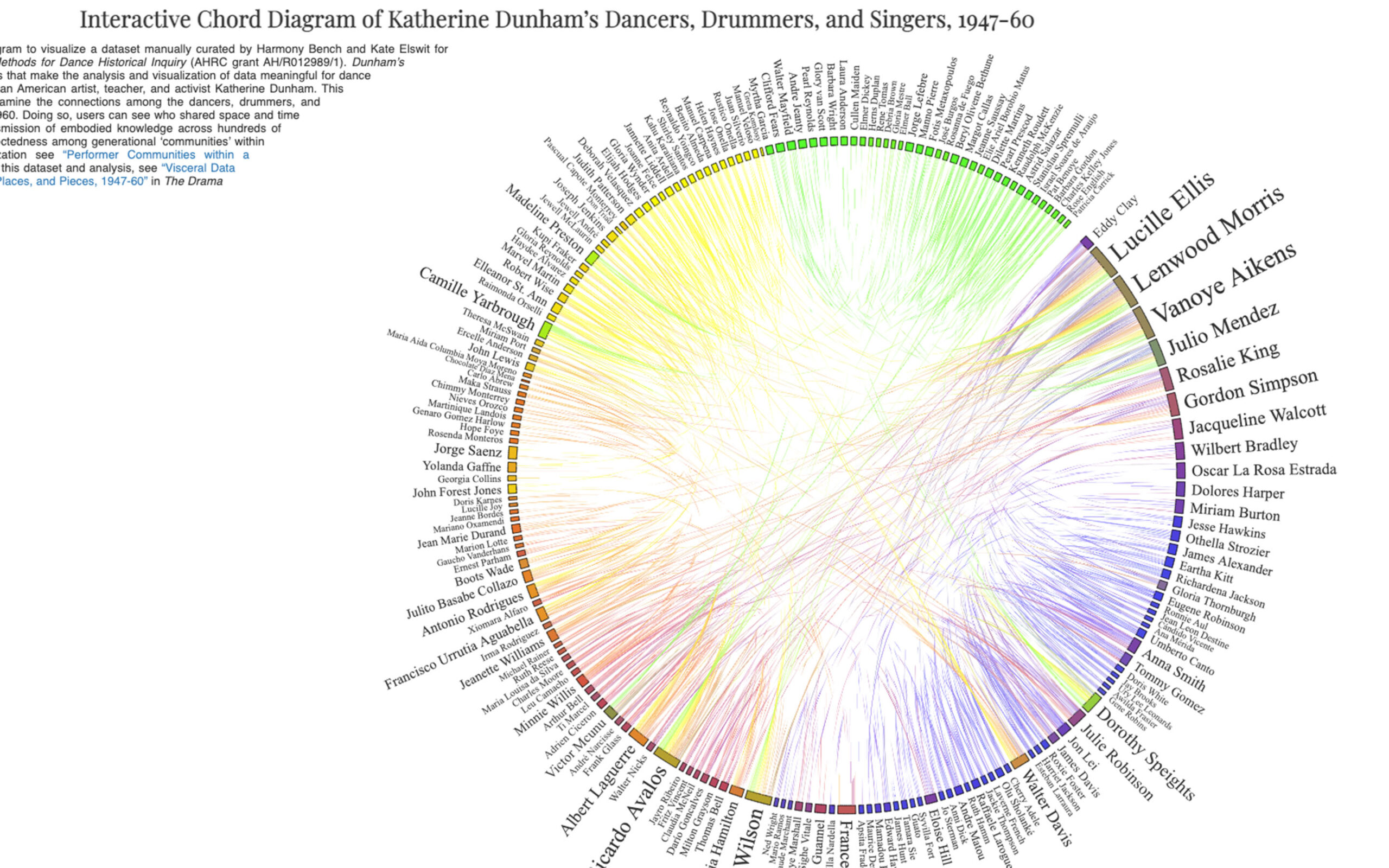
I find the visualizations related to the Repertory Dataset to be especially compelling. The Interactive Inspiration Map depicts locations that Dunham identified as sites of inspiration for choreographic works, enlivened by quotations from her program notes; and The Interactive Network of Dunham Company Repertory highlights connections across pieces and performances. These visualizations prompt me to consider the citational and iterative dynamics of choreography and creative process.
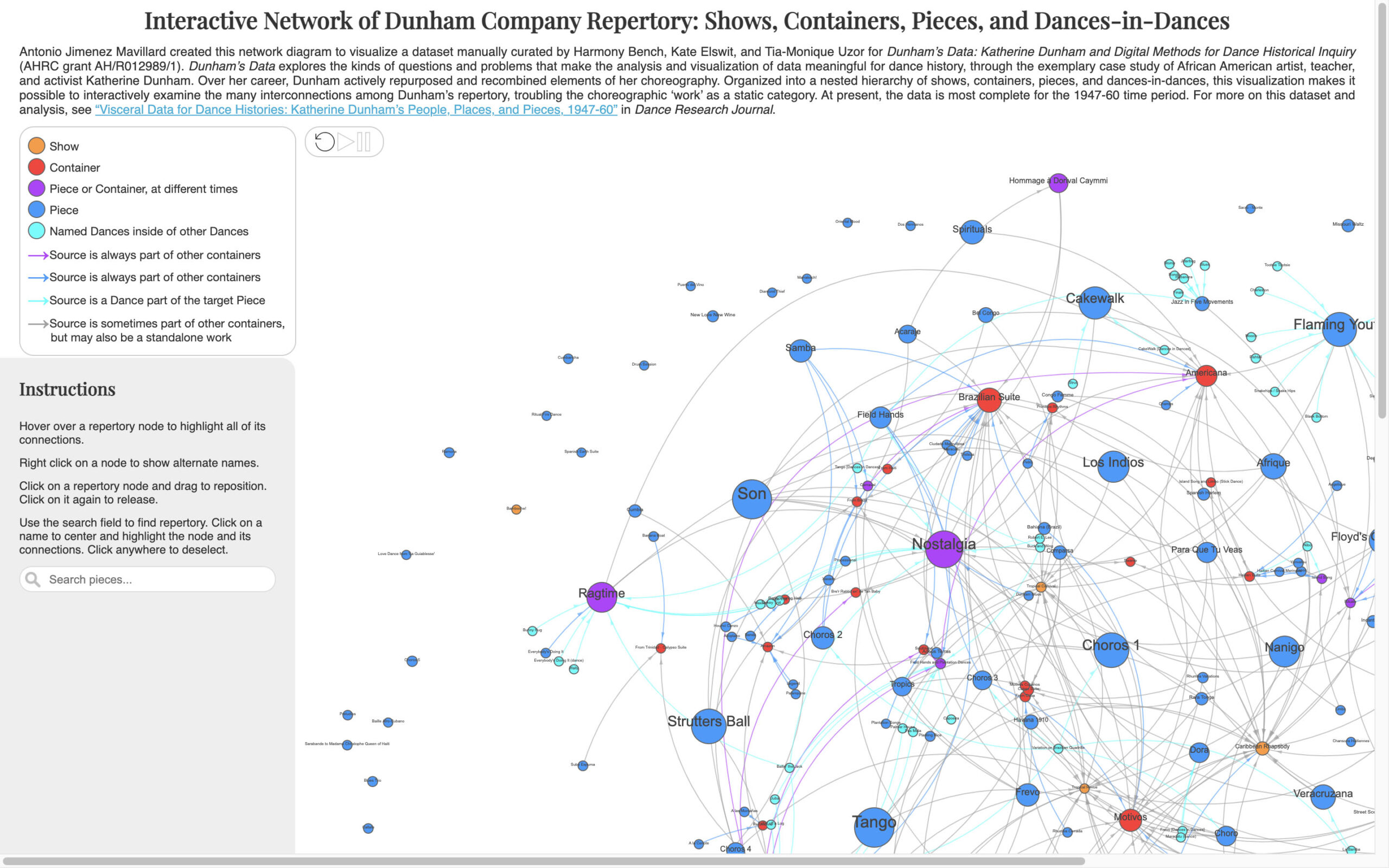
Elswit and Bench, along with a team of postdoctoral research assistants, manually curated the datasets from previously undigitized primary source materials held in seven different archives. User Guides explain the organization and decision-making processes behind each dataset, making clear that all data is inherently interpretive. Code and tutorials are available in Github repositories for a few of the visualizations, which were largely created by Antonio Jimenez Mavillard using Python and Javascript libraries and a range of other tools. Instructional resources and a preliminary Teaching Toolkit offer helpful ideas for engagement and entry points into what, for some audiences, might feel like dense material to dive into.
Overall, the project gives us a multi-faceted lens to explore how attention to moving bodies can expand and enrich historical inquiry.
Want to know more about Katherine Dunham? Check out these UT Libraries resources:
Dunham, Katherine, and Paul Bieschke. The HistoryMakers Video Oral History with Katherine Dunham. Chicago, Illinois: The HistoryMakers, 2016. Film.

